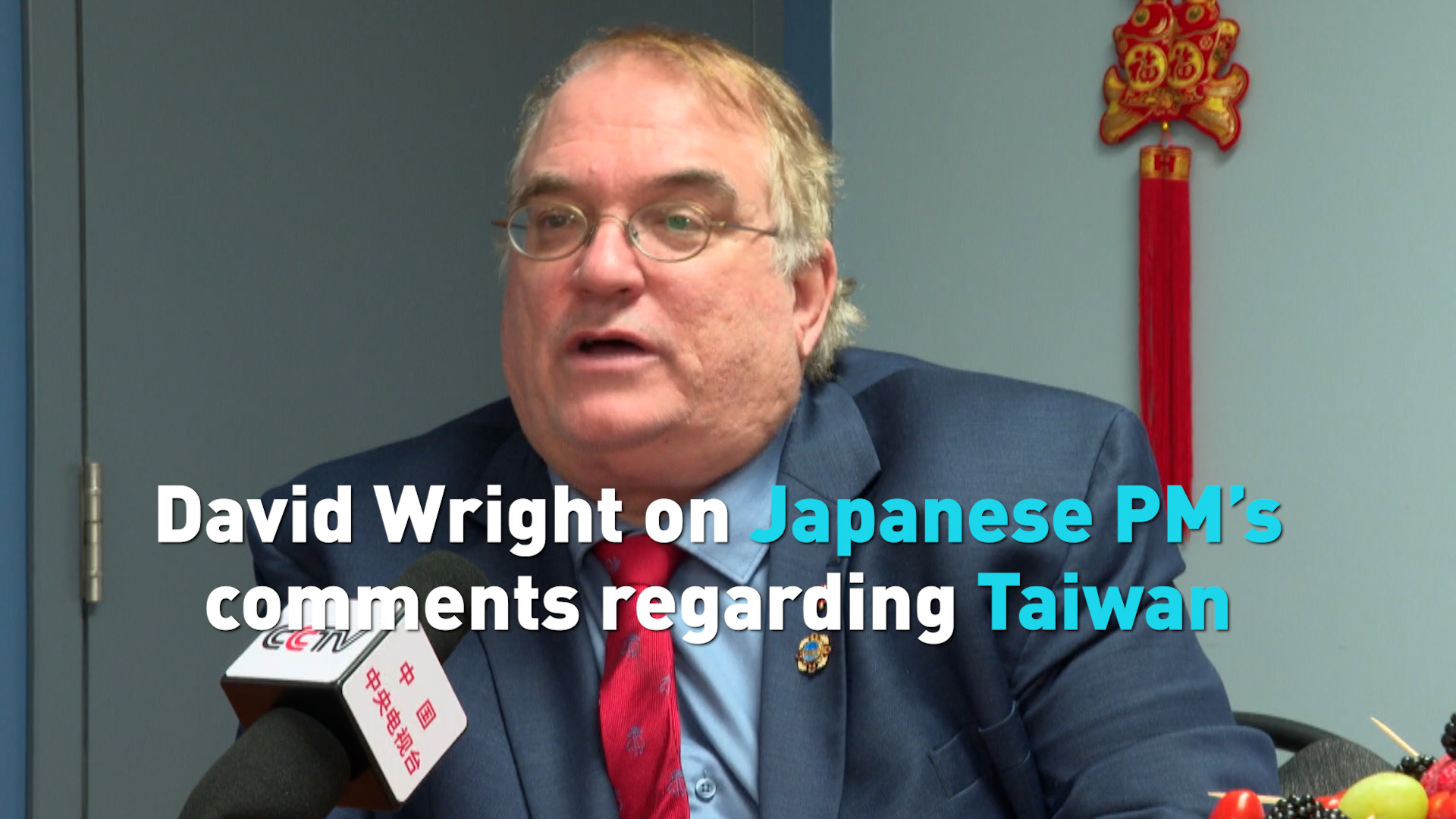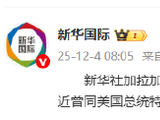US China Trade Relations; China's Latest UAV Development; New US Ambassador to China; The Latest on Rare Earth Exports; AI Content Infringement Insurance for AI Risks

U.S.-China Trade Relations: Amidst Stalemate and Strategic Adjustments
Recent developments showcase heightened pressures within U.S.-China trade negotiations, particularly revolving around the delicate issue of trade agreements and strategic commodities. A report from United Daily News (source) indicates that the Trump administration is prompting ally nations to expedite trade discussions and present their optimal trade terms. This is seen as a 'goodwill reminder' with an impending negotiation deadline. The U.S. aim appears to secure favorable deals concerning tariffs and non-tariff barriers, impacting diverse sectors from industrial to agricultural goods.
Radio France Internationale (RFI), covering the China's restrictions on rare earth exports, notes White House's close scrutiny over China's adherence to trade agreements, particularly those involving rare earth exports, crucial for electronics, automotive, and defense industries. Any alterations or restrictions here could significantly shift global supply chains and amplify geopolitical tensions.
The complex trade landscape has deeper ramifications. Internally, U.S. policy adjustments are fraught with dilemmas of balancing tough stances against the necessity for cooperative global trade dynamics. Countries like the EU, Japan, Vietnam, and India are navigating their responses carefully as they contend with impacts on digital trade and economic security commitments.
Hong Kong’s Political Climate: Restrictions and Yearnings for Autonomy
With the annual observance of the Tiananmen Square incident, Hong Kong faces renewed scrutiny over civic freedoms and legal restrictions. According to RFI (source), Hong Kong's Chief Executive, John Lee, comments on the legal boundaries applied to commemorative actions, emphasizing national security concerns. This reiteration of legal strictures seems to reflect an ongoing balancing act between law enforcement and rights to assembly and expression.
Interestingly, exiled activists continue their efforts from Taiwan, highlighting a shift in the protest epicenter from Hong Kong. With Taiwan becoming increasingly symbolic in discussions about democracy and human rights, its role stands as a stark counter-narrative to Chinese mainland policies and offers a contrasting venue where open remembrance and debate occur freely.
China’s Technological Ambitions: Navigating New Heights with UAV Development
In the realm of technology, China's advancements in unmanned aerial vehicles (UAVs) are making headlines. RFI highlights China’s latest UAV, the Jiu Tian, poised for its maiden flight by the end of June. This UAV boasts significant high-altitude and endurance capabilities, suggesting substantial developments in China’s aerospace technology sector.
This initiative might signal China's intentions to bolster its standing in military and technological arenas, presenting indirect challenges to countries reliant on such innovations for strategic advantages. With potential military applications and the prospect of affecting electronic and automotive sectors, China's UAV endeavors signal a new phase in the global tech race.
U.S.-China Diplomatic Engagements: Navigating a Complicated Landscape
Finally, diplomatic interactions between the U.S. and China continue to unfold as crucial touchpoints in bilateral relations. The Paper (source) reports on the meeting between Wang Yi, China's Foreign Minister, and the newly-appointed U.S. Ambassador, Nicholas Burns. Both parties stressed the need for enhanced communicative and cooperative frameworks to stabilize U.S.-China relations.
Through diplomatic channels, both nations envision mending divisions and shifting towards constructive engagement. However, persistent tensions over trade disparities and geopolitical disagreements mean that genuine harmony remains tentative, requiring significant trust-building efforts and concessions from both sides. This dual narrative, though challenging, underscores a shared objective of achieving sustained cooperation amidst prevailing disagreements.
Military Posturing: Shifts in U.S.-Eurasian Relations
Concurrently, military activities across the globe continue to shape the geopolitical landscape. The Paper's coverage offers detailed insights into shifting policies and military engagements, particularly focusing on the U.S. military's footprint reduction in Syria as reported by The Paper. U.S. Special Envoy Tom Barrack highlighted a plan to reduce the military presence from eight bases to just one, underscoring a significant strategic shift. This decision is seen in response to the lack of effectiveness of past policies over two decades and signals a possible recalibration of U.S. military strategy in the region.
Such military realignments can have substantial impacts on local power dynamics and geopolitical alignments. The withdrawal not only marks a shift in U.S. foreign policy but also opens the space for regional powers like Russia and Turkey to assert more influence in the Middle East, altering the balance of power and potentially impacting conflict resolutions and the geopolitical order in the region.
New US Ambassador to China
At the intersection of trade and military dynamics, diplomatic engagements seek to navigate these complex terrains. China's Foreign Ministry reports an optimistic start in the U.S.-China diplomatic landscape with the arrival of a new U.S. Ambassador to China, Graham Knett. According to China's Foreign Ministry, Foreign Minister Wang Yi welcomed Ambassador Knett and highlighted the importance of trust and cooperation in bilateral relations at a critical juncture. This reporting suggests China's interest in a stable and constructive relationship, even as geopolitical tensions simmer.
These diplomatic efforts are crucial in ensuring that trade and military issues do not spiral into broader conflicts. As geopolitical complexities increase, such diplomatic engagements emphasize the need for dialogue in resolving trade disputes and military tensions globally.
Trade Complexities: U.S.-China Relations and the Rare Earths Conundrum
As U.S.-China trade tensions continue to escalate, a keen focus is placed on rare earth exports, a crucial component for modern electronics and automobile industries. The White House recently expressed concerns over China's adherence to a previous tariff agreement. This ongoing pressure point in trade relations is of particular significance because rare earth elements are vital for industrial production globally, affecting sectors from military to consumer electronics.
According to another report by RFI, discussions between U.S. President Donald Trump and China's leader Xi Jinping are anticipated to marginally alleviate the situation, although global skepticism remains about the implementation and reliability of such agreements. As countries around the world watch closely, the rare earth trade not only exemplifies economic dependencies but also highlights the geopolitical strategies entwined with trade policies.
Washington's perspective is firmly grounded in maintaining rigid monitoring over China's commitments, while simultaneously navigating domestic pressures from industries reliant on these materials. The complications around rare earth exports further illustrate the delicate balancing act that defines today's global trade politics, where diplomatic negotiations and international dependencies intersect.
Issuance of Subordinated Debt by Chinese Commercial Banks
Securities Daily's report indicates an uptick in the issuance of subordinated bonds by Chinese banks, termed "evergreen bonds." It notes a shift where state-owned banks see reduced dependency on such bonds, whereas smaller banks increase their issuance as funding costs decline.
This phenomenon reflects the evolving financial strategy within China to bolster capital adequacy. While large banks might now rely less on these instruments due to alternative capital sources, this suggests smaller banks face greater capital pressures. The underlying financial strategies appear directed toward supporting sustained growth and financial stability amid broader economic reforms.
Insurance Innovations and AI-Generated Content Risks
The proliferation of AI applications is pushing varied sectors to innovate rapidly, and the insurance industry is no outlier. A recent piece from Securities Daily highlights the escalating risks associated with AI-generated content and the insurance industry's response via new product offerings. With AI tools like ChatGPT and DeepSeek accelerating content generation in text, image, audio, and video, insurance companies have introduced policies to protect against infringement issues like AI-generated deepfakes impacting intellectual property rights.
The article details a pivotal case illustrating this trend: a landmark court decision recognized that AI-generated 'face-swaps' do not constitute independent creation or fair use of original works. Such decisions stress the legal entanglements service providers and users may face over AI-generated content.
Mitigating Intellectual Property and Data Privacy Concerns
The Securities Daily article outlines how insurers are developing products to mitigate emerging AI risks—notably, the AI Content Infringement Insurance. This policy aims to shield technology companies from economic and legal liabilities stemming from inadvertent infringement caused by AI-generated content. When a user accidentally violates IP rights using AI-generated material, insurance can cover the ensuing legal costs.
Beyond content infringement, the piece notes ongoing explorations into insurance products that cover AI project failures and data security risks. This proactive stance underscores insurers' recognition of AI's potential pitfalls, such as data privacy breaches and technical inaccuracies in critical fields like healthcare.
The Growing AI Insurance Market: A Global Outlook
Securities Daily also discusses the broader economic impact of AI-related risks and insurance. They report projections indicating that by 2032, global premium scales connected to AI exploitation could reach nearly $47 billion annually, with an average growth rate of about 80%. The report aligns with findings from industry giant Munich Re, predicting robust growth due to evolving risk landscapes and customer demands.
These developments signal that AI risk management is poised to become a significant driver of growth in the global insurance market. As AI technologies become more entrenched, insurers are likely to play a crucial role in managing and transferring risks, enabling safer innovation.
Ensuring Ethical AI Use via Risk Evaluation and Model Optimization
One key insight offered by the paper is the importance of robust risk evaluation mechanisms. Experts argue that insurers must refine evaluation models and collaborate with professional entities to enhance precision. The dialogue points to ethical concerns around AI, illustrating the need for continuous model optimization based on complexity and tailored pricing based on application scenarios.
This approach not only aligns with risk management practices but also highlights insurers’ efforts to preemptively tackle issues related to algorithmic bias, privacy violations, and technical reliability. Such advanced risk frameworks could offer an ethical roadmap for AI deployment across industries.



